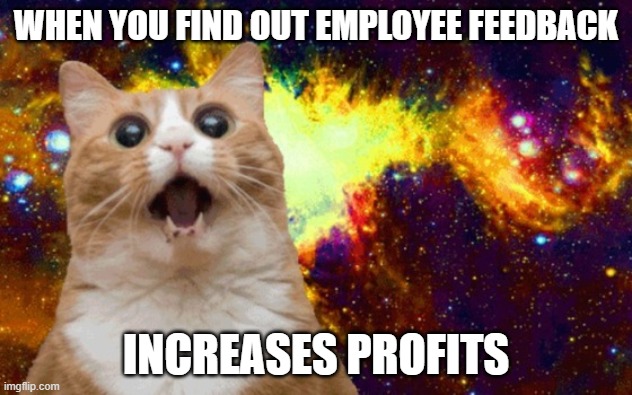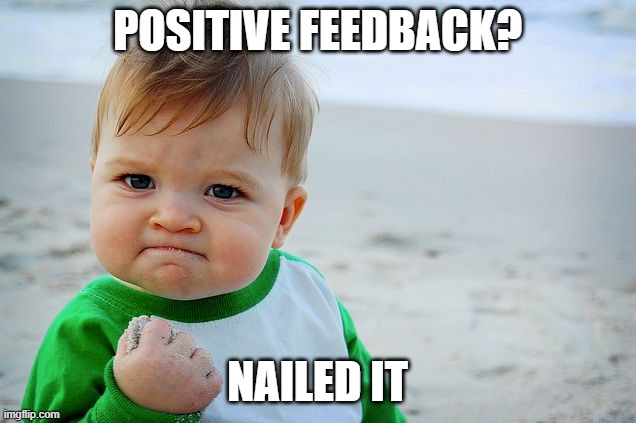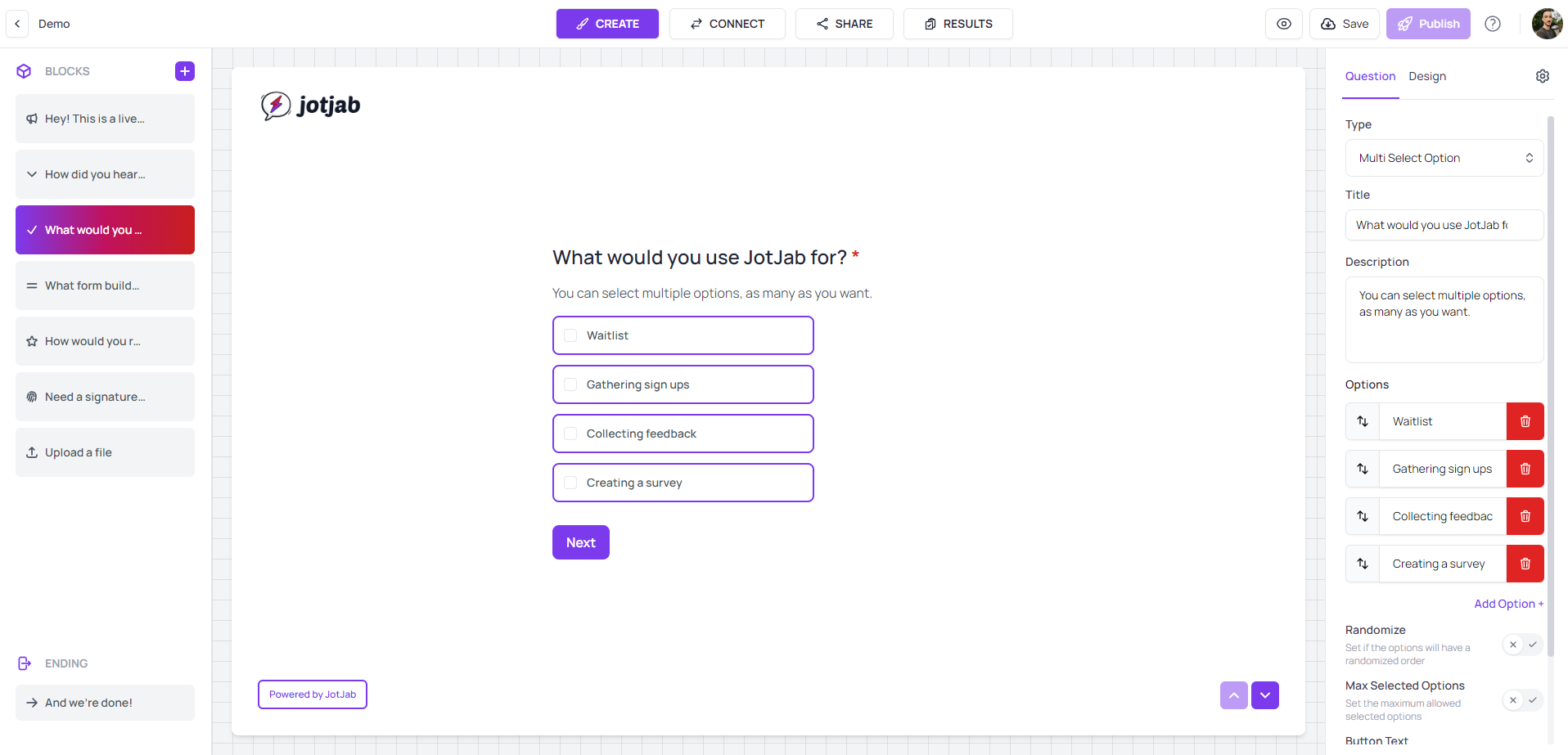
- Nov 05 2024
- 8 min read
Employee Feedback Form: The Ultimate Guide to Gathering & Acting on Employee Input
Let's face it - your employees are the backbone of your business, and if you're not listening to them, you're probably hemorrhaging talent (and money) without even knowing it.
Here's a mind-blowing stat for you: Companies that implement regular feedback systems can slash their employee turnover by a whopping 50%. That's not just a numbers game – we're talking about real money saved and happier, more productive teams.
Collecting employee feedback as a systematic process aimed at measurable goals is crucial. This approach demonstrates a commitment to employee input and encourages ongoing dialogue.
In this comprehensive guide, I'm going to show you exactly how to create and use employee feedback forms that actually work. No corporate jargon, no fluff – just actionable strategies that you can implement today.
Quick Facts That'll Blow Your Mind
- Companies with effective feedback systems see up to 21% higher profitability
- 89% of HR leaders agree that ongoing peer feedback is key for successful outcomes
- Only 58% of companies actually use the feedback they collect (don't be one of them!)

What Are Employee Feedback Forms?
Think of employee feedback forms as your company's secret weapon for understanding what's really going on in your workforce. They're not just another HR tool - they're your direct line to improving employee satisfaction, boosting retention, and creating a workplace people actually want to be part of.
An employee feedback survey is a powerful tool for gathering employee opinions and experiences, providing valuable insights into employee satisfaction and company culture.
Employee feedback surveys are essential tools for collecting insights from employees in a structured manner. They offer various templates and strategies for effective implementation, emphasizing the importance of regular collection intervals and customization options to improve engagement and response quality.
These forms can be anything from quick pulse surveys to in-depth performance reviews, but they all serve one crucial purpose: giving your employees a voice and your leadership team the insights they need to make smart decisions.
The Real Impact of Employee Feedback (With Numbers to Back It Up)
Let me hit you with some truth bombs about why feedback matters:
- Reduced Turnover: Companies that regularly collect and act on feedback see 50% lower turnover rates. Think about the cost savings there! Regular feedback and understanding employee needs significantly improve employee retention. When you consider that replacing a single employee can cost up to 200% of their annual salary, this isn't just about keeping people around – it's about protecting your bottom line.
- Higher Engagement: Employees who receive regular and constructive feedback are 3.6x more likely to be engaged at work. But here's the kicker: those engaged employees aren't just happier – they're 21% more profitable than their disengaged counterparts. They also take 41% fewer sick days and are 87% less likely to jump ship for another company. Talk about a win-win!
- Better Performance: Teams that implement regular feedback systems show a 12.5% increase in productivity. But that's just the tip of the iceberg. Companies with strong feedback cultures see 14.9% lower turnover rates specifically among high performers – you know, the ones you really want to keep around. Plus, teams who receive weekly feedback (instead of annual reviews) are 24% more likely to achieve their quarterly goals.
- Innovation Boost: Here's one that might surprise you: Organizations with robust feedback systems report 41% higher innovation rates. Why? Because when people feel heard, they're more likely to speak up with those game-changing ideas. Teams that encourage regular feedback are 63% more likely to try new approaches to their work.
- Leadership Development: The numbers don't lie – managers who regularly give and receive feedback are rated 8.9% more effective by their teams. Even better? Their teams report 40% higher engagement levels and are 2.7x more likely to be high performers themselves.
- Bottom-Line Impact: Let's talk money. Companies with strong feedback cultures report 15% higher profit margins than their competitors. They also see a 14.9% reduction in projects going over budget. If you're not measuring and acting on employee feedback, you're literally leaving money on the table.
Types of Feedback Forms (And When to Use Them)

Performance Evaluation Forms
Think of these as your deep-dive assessment tools. They're not just about checking boxes – they're about understanding how your employees are crushing their goals (or why they might be struggling).
What makes a great performance evaluation form:
- Specific, measurable metrics (none of that "meets expectations" nonsense)
- Clear examples of behaviors and outcomes
- Space for both achievements and areas for growth
- Forward-looking goal setting sections
360-Degree Feedback Forms
This is where things get interesting. 360-degree feedback is like getting a panoramic view of an employee's impact – from their boss, their peers, and even their direct reports.
Here's what you need to include:
- Leadership capabilities assessment
- Team collaboration metrics
- Communication effectiveness measures
- Problem-solving abilities evaluation
- Cultural fit indicators
Employee Feedback Surveys
These are your regular temperature checks. They help you spot issues before they become problems and identify wins you can build on. Job satisfaction is a key metric for understanding employee engagement and retention.
Key areas to cover:
- Work-life balance satisfaction
- Career growth opportunities
- Relationship with management
- Workplace culture assessment
- Resource and support evaluation
Creating Feedback Forms That Actually Work

The Anonymous Factor
Want honest feedback? Make it anonymous. Period. The numbers don't lie – employees are 2x more likely to provide critical feedback when they know it's anonymous. Response rates jump up by 75%, and the quality of suggestions improves significantly. It's worth the extra effort to ensure true anonymity.
Question Mix Magic
Your forms need variety to capture the full picture. Use rating scales when you need quantifiable data, multiple choice for quick insights, and open-ended questions when you need detailed feedback. Scenario-based questions can be particularly powerful for understanding how people handle specific situations. Mix it up, but keep it focused. Utilizing survey data is crucial for analyzing employee feedback and improving workplace dynamics.
Clear Communication is Key
Before you blast out that survey, make sure everyone knows why you're collecting feedback, how you'll use the information, when they can expect to see actions taken, and what's in it for them. Transparency here builds trust and increases participation.
Getting People to Actually Fill Out Your Forms
Even the best-designed feedback forms are useless if employees don't complete them. Success hinges on three key factors: smart incentives, flexible submission options, and showing clear results from previous feedback.
Smart Incentives That Work
Forget generic gift cards. Think about offering extra PTO hours for comprehensive feedback, or priority consideration for project assignments. Team lunch budgets when hitting response rate goals can work wonders. The key is making the incentive meaningful to your specific workforce.
Flexibility is Your Friend
Make it easy for people to participate. This means mobile-friendly surveys, multiple language options, and reasonable deadlines. Give people dedicated time during work hours to complete feedback forms – it shows you value their input enough to give them time for it.
Show Them the Money (Results)
People need to see that their feedback matters. Share aggregated results within two weeks. Create action plans based on feedback and regularly update on implementation progress. When wins come from feedback, celebrate them loudly. This creates a positive feedback loop that encourages future participation.

Analyzing and Acting on Feedback
Here's where the rubber meets the road. Having data is great, but knowing what to do with it is what separates good companies from great ones.
Analysis That Drives Action
- Look for patterns in responses
- Compare results across departments
- Track changes over time
- Identify quick wins vs. long-term projects
Making It Count
- Create specific action items
- Assign owners to each initiative
- Set realistic timelines
- Measure the impact of changes
Ready-to-Use Templates to Get You Started

Performance Review Template
Start with a goals assessment section and skills evaluation matrix. Include space for future development planning and make sure there's a two-way feedback component. The best templates encourage dialogue, not just evaluation, and emphasize personal and professional development as a key component of performance reviews.
Satisfaction Survey Template
Employee survey templates are essential tools for enhancing team dynamics and performance. Focus on employee engagement metrics, workplace environment assessment, and management effectiveness evaluation. Don't forget to include questions about growth opportunities – it's often a key driver of satisfaction.
360-Degree Feedback Template
Build in sections for leadership capabilities assessment, peer collaboration evaluation, and communication effectiveness measures. Include a values alignment check to ensure everyone's moving in the same direction. Utilizing 360-degree feedback can significantly enhance professional development by providing comprehensive insights that help employees understand and improve their performance in alignment with organizational goals.
WARNING: Shameless self-promotion incoming…
Ever struggled with creating employee feedback forms that people actually complete? I did too. That's why I built JotJab – it takes the headache out of feedback collection.
Create professional-looking forms in minutes with our drag-and-drop builder, customize them to match your brand, and share instantly via link or embed them right on your intranet. Want to automate the process? Our Slack and Google Sheets integrations automatically organize responses. From performance reviews to engagement surveys, JotJab makes it ridiculously easy.
Our users typically go from zero to collecting their first response in under 10 minutes.
Try it free – your HR team will thank you.
The Bottom Line
Employee feedback forms aren't just another HR checkbox – they're your secret weapon for building a stronger, more engaged, and more profitable business. When done right, they can transform your workplace culture and give you the insights you need to make smart decisions about your people.
Remember: The best time to implement a feedback system was yesterday. The second best time is now.
Ready to revolutionize how you gather employee feedback? Start with one template, customize it for your needs, and get it out there. Your employees (and your bottom line) will thank you.
FAQs
Q: How often should we collect feedback?
A: Aim for quarterly satisfaction surveys and annual comprehensive reviews, with pulse surveys monthly. But remember – it's better to do it less frequently and act on the results than to survey constantly and do nothing.
Q: What's the ideal length for a feedback form?
A: Keep it under 10 minutes to complete. You're looking at about 15-20 questions max for regular surveys, and up to 30 for annual reviews.
Q: How do we maintain anonymity while still getting actionable insights?
A: Use demographic data sparingly and only when you have enough employees in each category to maintain anonymity. For small teams, consider using external survey providers.
Q: What's the best way to handle negative feedback?
A: Treat it as gold – it's often the most valuable feedback you'll get. Acknowledge it, plan action steps, and communicate your response plan to the team.